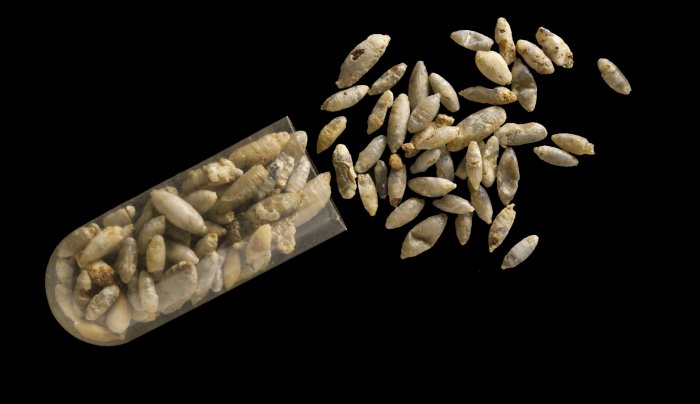The relationship between parasitoid (say: PEAR-eh-si-TOY-d) wasps and other bugs is, well, kind of complicated.
A parasitoid wasp lays its eggs within the eggs of a stink bug. (Getty Embed)
A parasite is an animal that lives off of another animal called a host. In the case of parasitoid wasps, they lay their eggs in or on other insects or spiders—their eggs then hatch and feed on their host. Yikes!
"Oh no, you don't!" This protective mother beetle guards her eggs against parasitoid wasps. (Getty Embed)
And, as the fossils that you're about to see here prove, this behaviour is far from a new thing in the bug world. These wasps have been doing their thing for at least 23 million years!
Old fossil, modern analysis
Each parasitoid wasp species has its own preferred species to use as a host—as well as its own preferred life stage to attack it. (Insects have four life stages—egg, larva, pupa, and adult.) Some wasps lay their eggs inside adult bugs, for example. A favourite technique though is laying eggs inside the pupae, or the stage between a larva and an adult.
This example is a collection of around 1,500 fossilized prehistoric fly pupae. These tiny artifacts, which look like a handful of rice, were actually discovered way back in the 1800s. And one was dissected in the 1940s to reveal what appeared to be a wasp. But now modern X-ray and computer technology are allowing scientists to make a proper investigation of dozens of these pupae.
Witness for yourself this animation of an X-ray of one of the pupae ... if you dare.
Fascinating and frightening
Those images may be a little creepy (especially if you're an insect!). But they're also pretty amazing. Even after millions of years and fossilization that turned the pupae from organic material to mineral, the impressions of the wasps inside remained intact.
Scientists hope that X-ray technology will allow them to explore the insides of similar fossils in the future.
 Over a hundred years ago, these fossilized fly pupae were discovered. Today, technology reveals the nasty surprise inside! (Georg Oleschinski)
Over a hundred years ago, these fossilized fly pupae were discovered. Today, technology reveals the nasty surprise inside! (Georg Oleschinski)










this is cool 😎